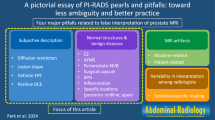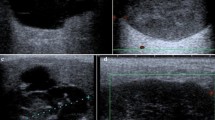Abstract
Purpose
We aimed to evaluate the reliability of a portable device that applies Raman spectroscopy at an excitation wavelength of 1064 nm for the post-operative analysis of urinary stone composition.
Materials and methods
Urinary stone samples were obtained post-operatively from 300 patients. All samples were analyzed by the portable Raman spectroscopy system at an excitation wavelength of 1064 nm as well as by infrared spectroscopy (IR), and the results were compared.
Results
Both Raman spectroscopy and IR could detect multiple stone components, including calcium oxalate monohydrate, calcium oxalate dihydrate, calcium phosphate, uric acid, cystine, and magnesium ammonium phosphate hexahydrate. The results from 1064-nm Raman analysis matched those from IR analysis for 96.0% (288/300) of cases. Although IR detected multiple components within samples more often than Raman analysis (239 vs 131), the Raman analysis required less time to complete than IR data acquisition (5 min vs 30 min).
Conclusions
These preliminary results indicate that 1064-nm Raman spectroscopy can be applied in a portable and automated analytical system for rapid detection of urinary stone composition in the post-operative clinical setting.
Trial registration
Chinese Clinical Trail Register ID: ChiCTR2000039810 (approved WHO primary register) http://www.chictr.org.cn/showproj.aspx?proj=63662.




Similar content being viewed by others
Abbreviations
- IR:
-
Infrared spectroscopy
- FTIR:
-
Fourier transform infrared spectroscopy
- COM:
-
Calcium oxalate monohydrate
- COD:
-
Calcium oxalate dihydrate
- CaP:
-
Calcium phosphate
- UA:
-
Uric acid
- MAPH:
-
Magnesium ammonium phosphate hexahydrate
- SVM:
-
Support vector machine
References
Pak CY (1998) Kidney stones. Lancet 351:1797
Heers H, Turney BW (2016) Trends in urological stone disease: a 5-year update of hospital episode statistics. BJU Int 118:785
Romero V, Akpinar H, Assimos DG (2010) Kidney stones: a global picture of prevalence, incidence, and associated risk factors. Rev Urol 12:e86
Zeng G, Mai Z, Xia S et al (2017) Prevalence of kidney stones in China: an ultrasonography based cross-sectional study. BJU Int 120:109
Kirkali Z, Rasooly R, Star RA et al (2015) Urinary stone disease: progress, status, and needs. Urology 86:651
Uribarri J, Oh MS, Carroll HJ (1989) The first kidney stone. Ann Intern Med 111:1006
Alberti KG, Zimmet P, Shaw J (2005) The metabolic syndrome–a new worldwide definition. Lancet 366:1059
Fink HA, Akornor JW, Garimella PS et al (2009) Diet, fluid, or supplements for secondary prevention of nephrolithiasis: a systematic review and meta-analysis of randomized trials. Eur Urol 56:72
Strohmaier WL (2000) Course of calcium stone disease without treatment. What can we expect? Eur Urol 37:339
Rodgers AL, Nassimbeni LR, Mulder KJ (1982) A multiple technique approach to the analysis of urinary calculi. Urol Res 10:177
Brien G, Schubert G, Bick C (1982) 10,000 analyses of urinary calculi using X-ray diffraction and polarizing microscopy. Eur Urol 8:251
Sorokin I, Mamoulakis C, Miyazawa K et al (2017) Epidemiology of stone disease across the world. World J Urol 35:1301
Lotan Y (2009) Economics and cost of care of stone disease. Adv Chronic Kidney Dis 16:5
Lotan Y, Cadeddu JA, Roerhborn CG et al (2004) Cost-effectiveness of medical management strategies for nephrolithiasis. J Urol 172:2275
Pak CY, Poindexter JR, Adams-Huet B et al (2003) Predictive value of kidney stone composition in the detection of metabolic abnormalities. Am J Med 115:26
Straub M, Strohmaier WL, Berg W et al (2005) Diagnosis and metaphylaxis of stone disease. Consensus concept of the National working committee on stone disease for the upcoming German urolithiasis guideline. World J Urol 23:309
Corrales M, Doizi S, Barghouthy Y et al (2021) Classification of stones according to michel daudon: a narrative review. Eur Urol Focus 7(1):13–21
Schubert G (2006) Stone analysis. Urol Res 34:146
Beischer DE (1955) Analysis of renal calculi by infrared spectroscopy. J Urol 73:653
Wignall GR, Cunningham IA, Denstedt JD (2009) Coherent scatter computed tomography for structural and compositional stone analysis: a prospective comparison with infrared spectroscopy. J Endourol 23:351
Sun X, Shen L, Cong X et al (2011) Infrared spectroscopic analysis of 5,248 urinary stones from Chinese patients presenting with the first stone episode. Urol Res 39:339
Tonannavar J, Deshpande G, Yenagi J et al (2016) Identification of mineral compositions in some renal calculi by FT Raman and IR spectral analysis. Spectrochim Acta A Mol Biomol Spectrosc 154:20
Corns CM (1983) Infrared analysis of renal calculi: a comparison with conventional techniques. Ann Clin Biochem 20(Pt 1):20
Takasaki E (1996) Carbonate in struvite stone detected in Raman spectra compared with infrared spectra and X-ray diffraction. Int J Urol 3:27
Muhammed Shameem KM, Chawla A, Mallya M et al (2018) Laser-induced breakdown spectroscopy-Raman: an effective complementary approach to analyze renal-calculi. J Biophotonics 11:e201700271
Castiglione V, Sacré PY, Cavalier E et al (2018) Raman chemical imaging, a new tool in kidney stone structure analysis: case-study and comparison to Fourier Transform Infrared spectroscopy. PLoS ONE 13:e0201460
Miernik A, Eilers Y, Bolwien C et al (2013) Automated analysis of urinary stone composition using raman spectroscopy: pilot study for the development of a compact portable system for immediate postoperative ex vivo application. J Urol 190:1895
Miernik A, Hein S, Wilhelm K et al (2017) pakUrinary stone analysis - what does the future hold in store? Aktuelle Urol 48:127
Miernik A, Eilers Y, Nuese C et al (2015) Is in vivo analysis of urinary stone composition feasible? Evaluation of an experimental setup of a Raman system coupled to commercial lithotripsy laser fibers. World J Urol 33:1593
Author information
Authors and Affiliations
Contributions
Protocol/project development: EM and LW. Data collection or management: GJ, ZC, KC, EM, and LW. Data analysis: WZ, ZS, QZ, FY, EM, and LW. Manuscript writing/editing or review: WZ, ZS, LY, YX, EM, and LW.
Corresponding authors
Ethics declarations
Conflict of interest
The authors declare that there are no conflicts of interest.
Ethics approval
The study design was approved by Union Hospital ethics review board. The procedures used in this study adhere to the tenets of the Declaration of Helsinki.
Consent to participate
Informed consent was obtained from all individual participants included in the study.
Consent for publication
Consent for publication was obtained from all individual participants included in the study.
Additional information
Publisher's Note
Springer Nature remains neutral with regard to jurisdictional claims in published maps and institutional affiliations.
Rights and permissions
About this article
Cite this article
Zhu, W., Sun, Z., Ye, L. et al. Preliminary assessment of a portable Raman spectroscopy system for post-operative urinary stone analysis. World J Urol 40, 229–235 (2022). https://doi.org/10.1007/s00345-021-03838-8
Received:
Accepted:
Published:
Issue Date:
DOI: https://doi.org/10.1007/s00345-021-03838-8




